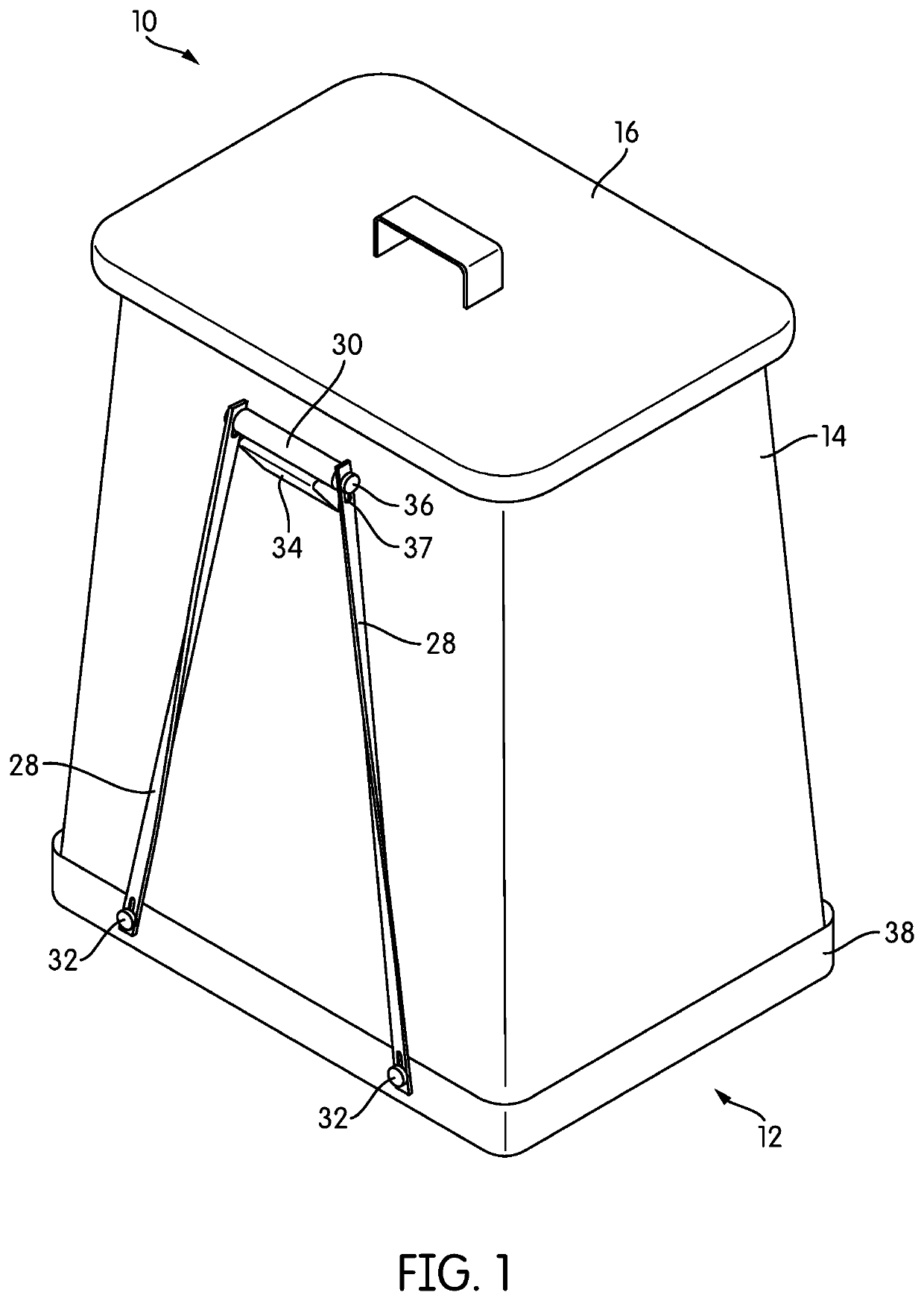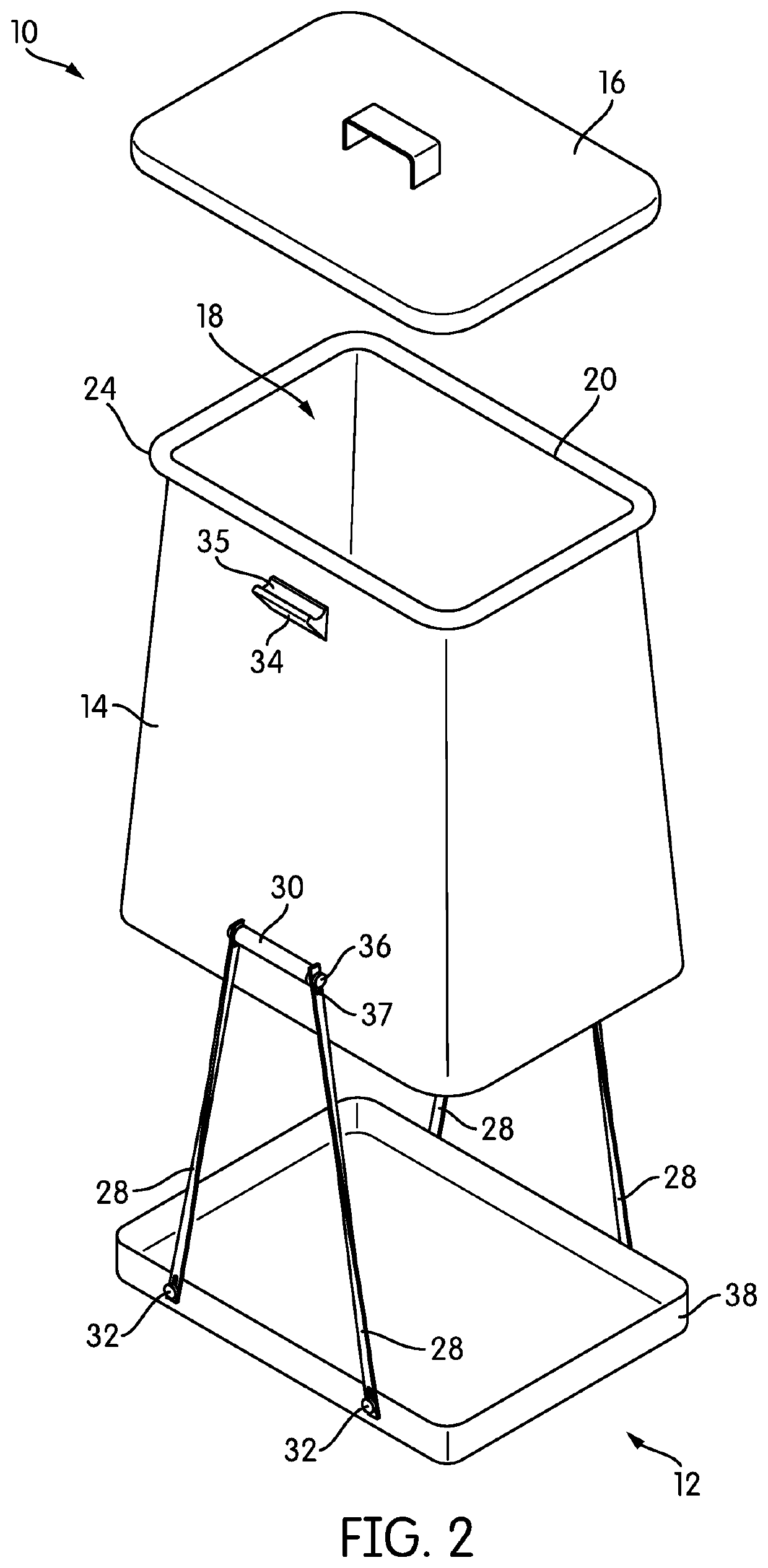Two-part garbage can in which the bottom is separable from the sidewall
a garbage can and sidewall technology, applied in the field of trash can assemblies, can solve the problems of allowing trash to fall out, affecting the quality of trash cans,
- Summary
- Abstract
- Description
- Claims
- Application Information
AI Technical Summary
Benefits of technology
Problems solved by technology
Method used
Image
Examples
Embodiment Construction
[0019]FIG. 1 is a perspective view of a trash can 10 according to an embodiment of the invention. Trash can 10 includes a base 12 and a sidewall 14. A simple lid 16 tops sidewall 14 and closes trash can 10 in FIG. 1, but other types of lids may be used in other embodiments. In the illustrated embodiment, base 12, sidewall 14, and lid 16 have rectilinear features, although they could be round or rounded in other embodiments. As will be described below in more detail, base 12 and sidewall 14 are separable from one another.
[0020]FIG. 2 is an exploded perspective view and FIG. 3 is an exploded side view of trash can 10, illustrating the separability of base 12 and sidewall 14. Base 12 and sidewall 14 together define a hollow cavity 18 sized and otherwise adapted to hold a trash bag (not shown in FIGS. 2-3). Hollow cavity 18 extends between a top opening 20 of sidewall 14 and a bottom opening 22 of sidewall 14. Top opening 20 is sized to allow a trash bag or other material to be placed w...
PUM
 Login to View More
Login to View More Abstract
Description
Claims
Application Information
 Login to View More
Login to View More - R&D
- Intellectual Property
- Life Sciences
- Materials
- Tech Scout
- Unparalleled Data Quality
- Higher Quality Content
- 60% Fewer Hallucinations
Browse by: Latest US Patents, China's latest patents, Technical Efficacy Thesaurus, Application Domain, Technology Topic, Popular Technical Reports.
© 2025 PatSnap. All rights reserved.Legal|Privacy policy|Modern Slavery Act Transparency Statement|Sitemap|About US| Contact US: help@patsnap.com



